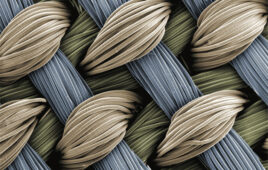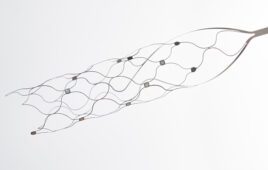Shrinking medical technologies could improve patient quality of life. But don’t overlook the challenges that come with medical device miniaturization.
Mike Johnson, Jason Phillips and Mark Burchnall, Stress Engineering Services (SES)
 Failure analysis projects of miniaturized medical devices provide an important lesson: Design solutions need to be customized for the application.
Failure analysis projects of miniaturized medical devices provide an important lesson: Design solutions need to be customized for the application.
Datasheets and other vendor literature may not provide the accurate picture of a component’s material properties at a miniaturized scale. Material properties of components may change as the size of components approach the grain structure size and require custom processing to get to the final component construction. Custom component level bench tests need to be completed to fully understand that components performance against its intended requirements. We’ve often seen such challenges in sealing, assembly features, electrical components and mechanical manipulation components in miniaturized assemblies.
Sterilization techniques, sustained loading/strain, or manufacturing conditions can also affect medical device components in a miniaturized assembly.
At SES’s Force-4 medical device product development group — where we work — we’ve found the best solution is for the design process to begin with discovery and focus on the human context of the miniaturized device.
Our clients are often asking us to make their products as small as possible so that they are better able to interact with patients and improve quality of life during usage. Our approach to medical device miniaturization at Force-4 starts with understanding the environmental requirements that our clients are trying to achieve as well as empathy for user experience. (Are they a consumer, user, patient, or caregiver?)
Often the driving reason for miniaturization is the interest of achieving a better human interfacing device. Whether the device is worn or in the skilled hands of a surgeon, the interaction of human and machine is critical to the design vision. Force-4 through Human Performance Research (in partnership with the AFRL, WPAFB, Human Performance Directorate) has developed design strategies that guide miniaturization and its human integration vision.
Miniaturization and human integration tend to occur on a continuum of four stages:
- Component Integration — making a device fit to human scale, either wearable for transport or able to be grasped for manipulation. (Smart watches, backpack heart-pump, CF vests)
- Streamlining —the evolution of a device to become even further integrated into the human form factor with less bulk, greater mobility and more dexterity. (Insulin pumps, multi-feature handheld surgical devices, eyewear with built-in headphones)
- Hybridizing — taking advantage of a closer and less easily separable connection to the body which speeds information to the senses, heightening performance. (Artificial pancreas, implanted chips, ocular implants, exoskeletons, prosthetics)
- Remote Integration — furthering capability with accessible features and functionality untethered to direct human-centered form factor. (Robotic surgery, UAVs, IOT sensors)
When planning a miniaturization strategy, it is important to consider the level of needed integration and think of form factor with an eye toward some degree of elasticity. Namely, how can form change and remain effective in the event it needs to be somewhat larger or altered in geometry? The ultimate solution could amount to a combination of the above strategies.
Additionally, the ability to manufacture the device often comes into effect. Miniaturization can significantly challenge traditional methods of manufacturing and automation. It is important to pull in manufacturing expertise during the design process to ensure planning and early technology selection. That includes considerations of challenges such as material handling for assembly and final packaging. Issues typically resolved later in the project need to be well thought out early on with experienced personnel to ensure design outcomes are necessary. At Force-4, we focus on our systems engineering to ensure we have collaborated concurrently throughout the design.
There are also final considerations associated with cost. One needs to consider the total cost of the device, regardless of the product lifecycle, if a viable product being taken to market.
In summary, design for miniaturization is driven by the need for devices more highly in-tune with the human form and surrounding environment; this progress will always challenge manufacturing and necessary automation. For Force-4, the challenges around medical device miniaturization mean thinking inside out and outside in — and understanding implied micro to macro relationship of a device’s interaction with the user. Force-4, as a subsidiary of Stress Engineering Services, now completes full product development, sustaining engineering and equipment development as it continues to leverage SES’s strong history in failure analysis and physics-based predictive design analysis. We merge vision for the human scale and the technical foresight to achieve the supporting miniaturization goals.
Mike Johnson is director of product development, Jason Phillips is manager of industrial design, and Mark Burchnall is senior associate engineer at the Force-4 subsidiary of Stress Engineering Services (SES).
The opinions expressed in this blog post are the author’s only and do not necessarily reflect those of Medical Design and Outsourcing or its employees.




